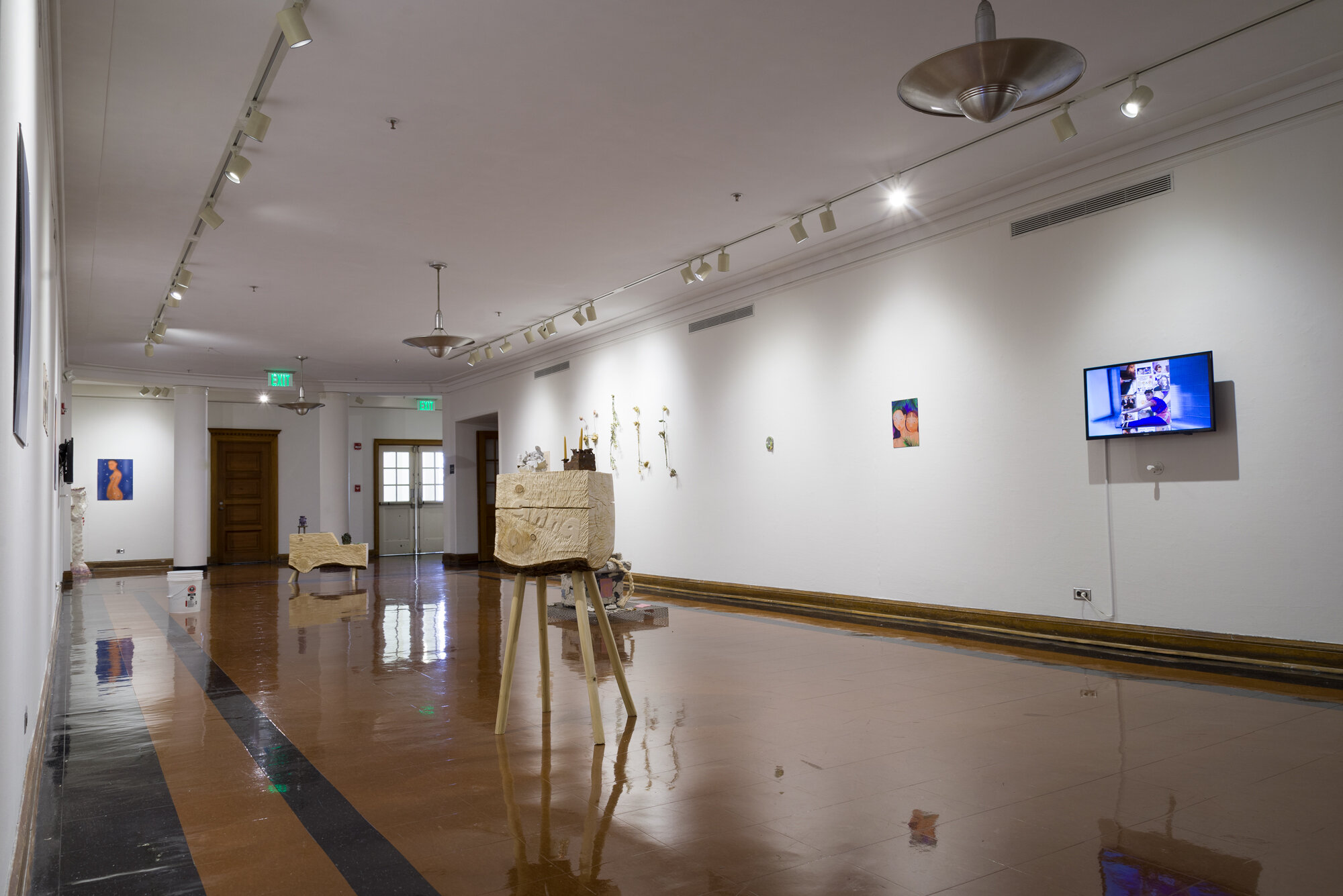A Ribbon, a Pearl, a Sedimentary Rock
Gormley Gallery
Notre Dame of Maryland University
January 27–March 6, 2020
Kira Bell
Anna K. Crooks
Taina Cruz
Coco Klockner
Michelle Luong
Maya Martinez
Pangelica
___
Dearest,
A sedimentary rock forms through the amassing of organic material and debris. Processes of weathering, erosion, accumulation, and dissolution transform sediment and mineral into a new rock formation, clustered and striated. It is bumpy. Fragmented. One image I find in a library book even shows a sedimentary rock with worn-down pennies and bits of plastic embedded in its skin of pebbles and sand. The aggregate grows and shifts and swallows whatever material brushes up against its blurry edges.
Maybe the same can be said of femininity. It’s a slippery term, and though it’s one I think about a lot, any definition I settle on inevitably lacks the eloquence of Judith Butler’s musings on the enactment of gender or Paul Preciado’s breakdown of the so-called pharmacopornagraphic era, in which “like the Pill or oncomouse, gender is a biotech industrial artifact.” It does feel like femininity, while hard to pin down, is something shared, even if it is unnamed—certainly not in chromosomes or features, organs or hormones, but maybe something else. I feel it inside all of the objects in this room, even when it’s difficult to name. A whisper, a nod. Something innate that evades language.
A Ribbon, a Pearl, a Sedimentary Rock gathers together a selection of artists who forage—from the internet, from the natural world, from cultural content—to deconstruct this multiplicity of femininity and femme. Signifiers of the feminine— bows, pearls, ribbons—are reexamined as potent objects holding history, wrath, whispers, and power, and femme is reimagined as a process of collecting, constructing, borrowing, and building. None of the featured artists here exclusively explores gender in their practice; rather, it is only one facet of a far-more expansive exploration of self, environment, body, and world. These collections of borrowed language, footage, imagery, and symbols play with cultural signifiers of the feminine and forage from many sources to create something haunting, something sweet.
Inside the gallery is a garden; be sure to look closely to find all of the sediment that has accumulated, eroded, blossomed, and shriveled. A shared lexicon of ribbons, tears, text messages, patches, flora, and internet tutorials emerges. Let it serve as a reminder of the uncultivated wilderness upon which this campus was built in the 1870s and the drastic evolution that the understanding of a women’s college has undergone since that time.
Lovingly.
__







